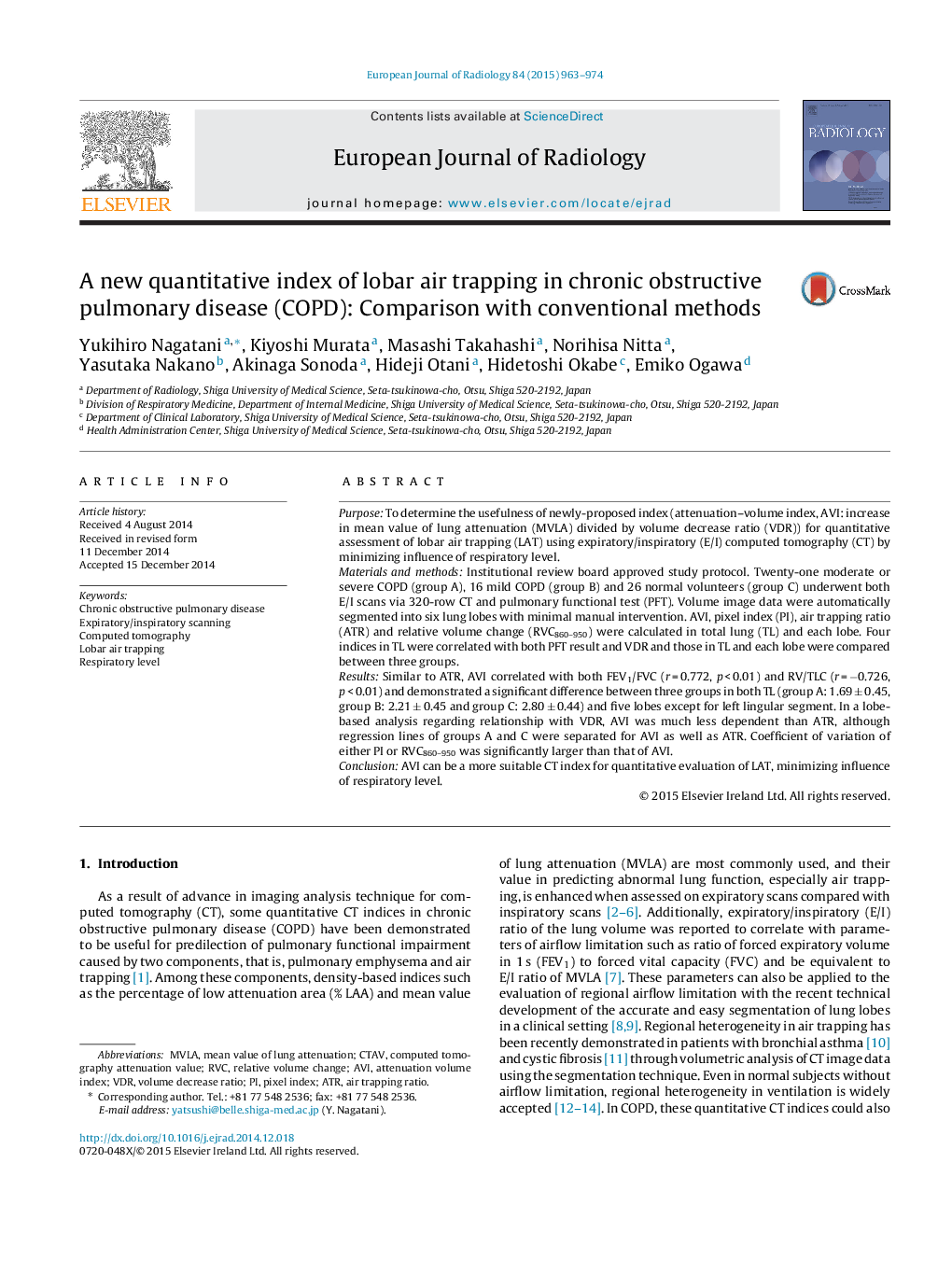| کد مقاله | کد نشریه | سال انتشار | مقاله انگلیسی | نسخه تمام متن |
|---|---|---|---|---|
| 4225429 | 1609754 | 2015 | 12 صفحه PDF | دانلود رایگان |

• In the total lung field, AVI had excellent correlation with FEV1/FVC.
• AVI showed differences between three groups classified by the COPD severity.
• In a lobe-based analysis, AVI did not mostly correlated with volume decrease ratio.
• In a lobe-based analysis, coefficient of variation was relatively small in AVI.
• In some lobes, AVI associated with the COPD severity despite respiratory level.
PurposeTo determine the usefulness of newly-proposed index (attenuation–volume index, AVI: increase in mean value of lung attenuation (MVLA) divided by volume decrease ratio (VDR)) for quantitative assessment of lobar air trapping (LAT) using expiratory/inspiratory (E/I) computed tomography (CT) by minimizing influence of respiratory level.Materials and methodsInstitutional review board approved study protocol. Twenty-one moderate or severe COPD (group A), 16 mild COPD (group B) and 26 normal volunteers (group C) underwent both E/I scans via 320-row CT and pulmonary functional test (PFT). Volume image data were automatically segmented into six lung lobes with minimal manual intervention. AVI, pixel index (PI), air trapping ratio (ATR) and relative volume change (RVC860–950) were calculated in total lung (TL) and each lobe. Four indices in TL were correlated with both PFT result and VDR and those in TL and each lobe were compared between three groups.ResultsSimilar to ATR, AVI correlated with both FEV1/FVC (r = 0.772, p < 0.01) and RV/TLC (r = −0.726, p < 0.01) and demonstrated a significant difference between three groups in both TL (group A: 1.69 ± 0.45, group B: 2.21 ± 0.45 and group C: 2.80 ± 0.44) and five lobes except for left lingular segment. In a lobe-based analysis regarding relationship with VDR, AVI was much less dependent than ATR, although regression lines of groups A and C were separated for AVI as well as ATR. Coefficient of variation of either PI or RVC860–950 was significantly larger than that of AVI.ConclusionAVI can be a more suitable CT index for quantitative evaluation of LAT, minimizing influence of respiratory level.
Journal: European Journal of Radiology - Volume 84, Issue 5, May 2015, Pages 963–974